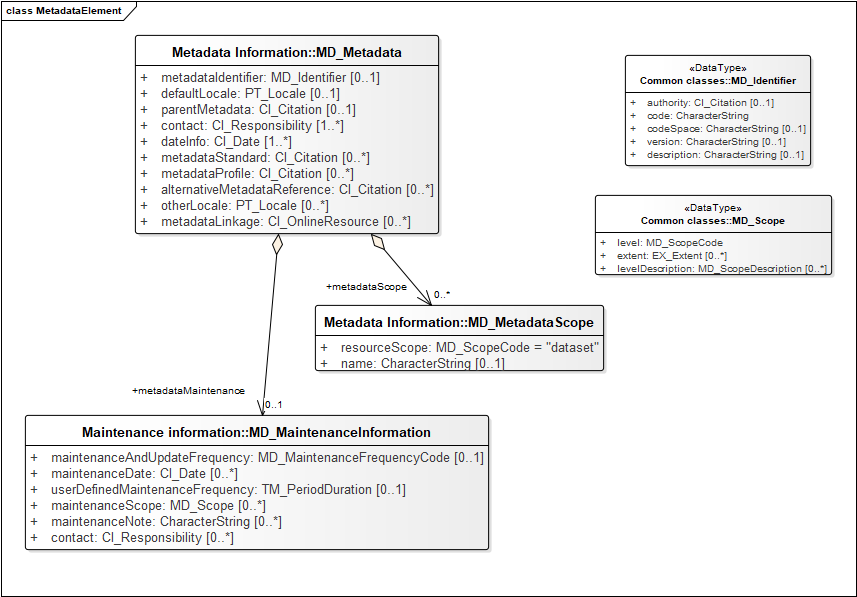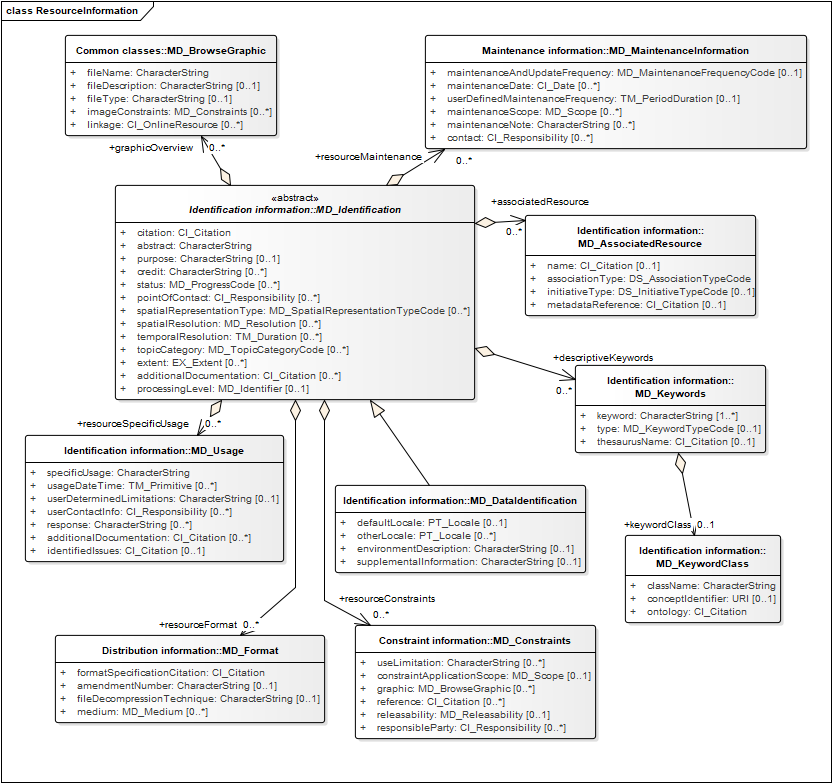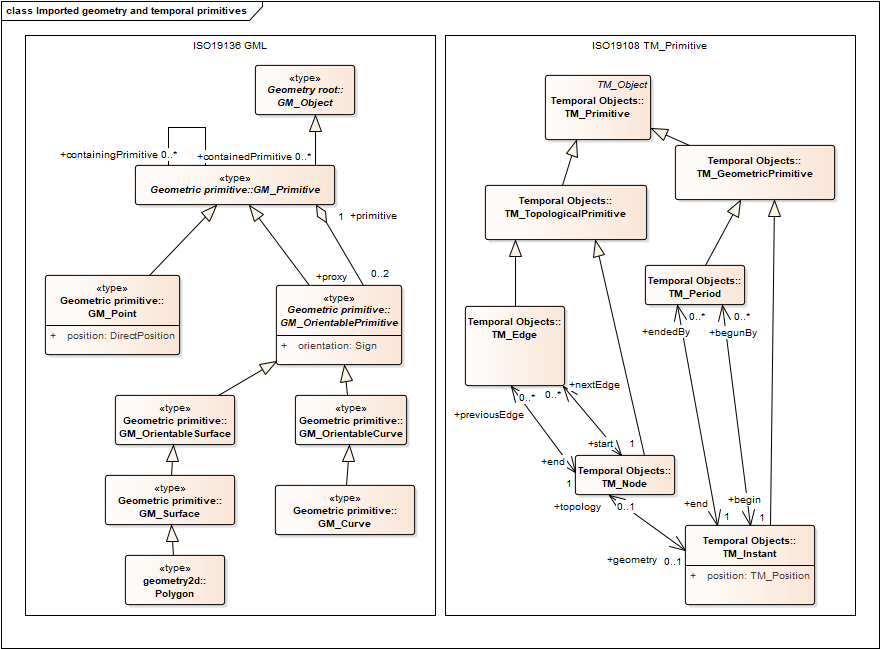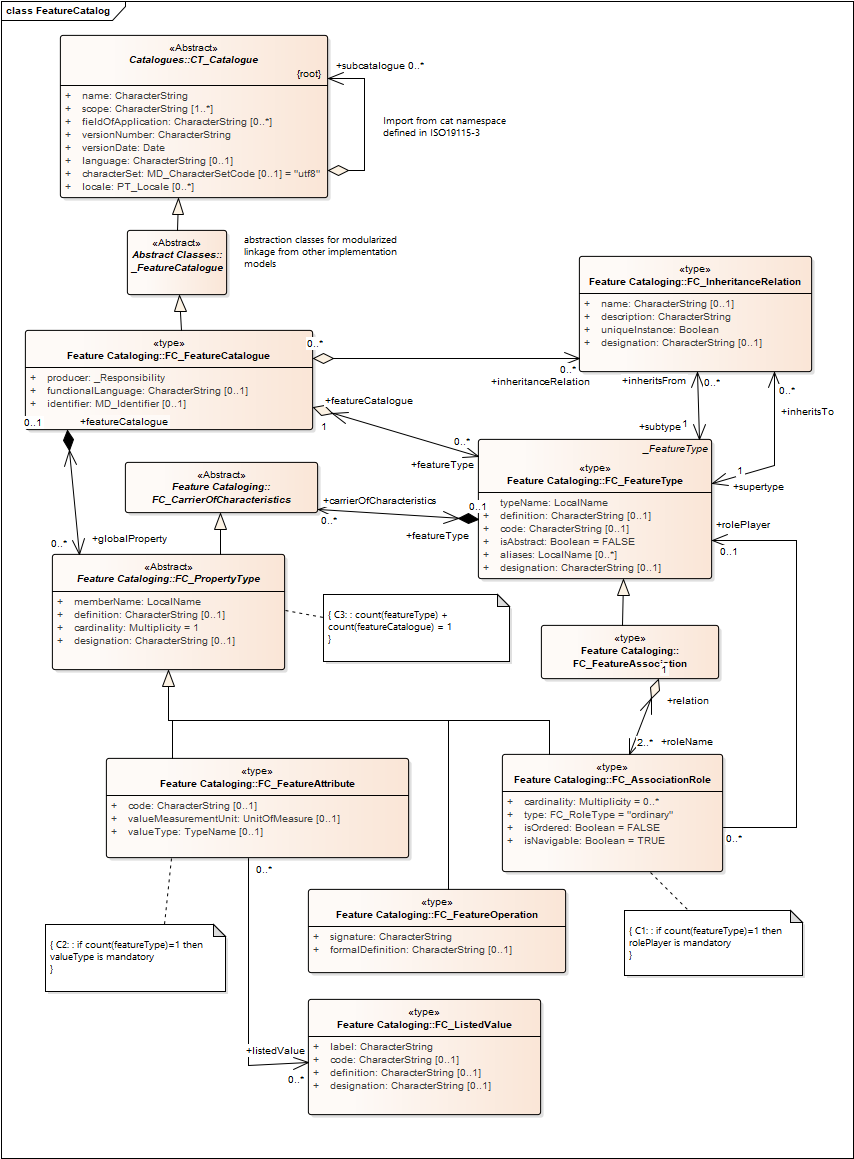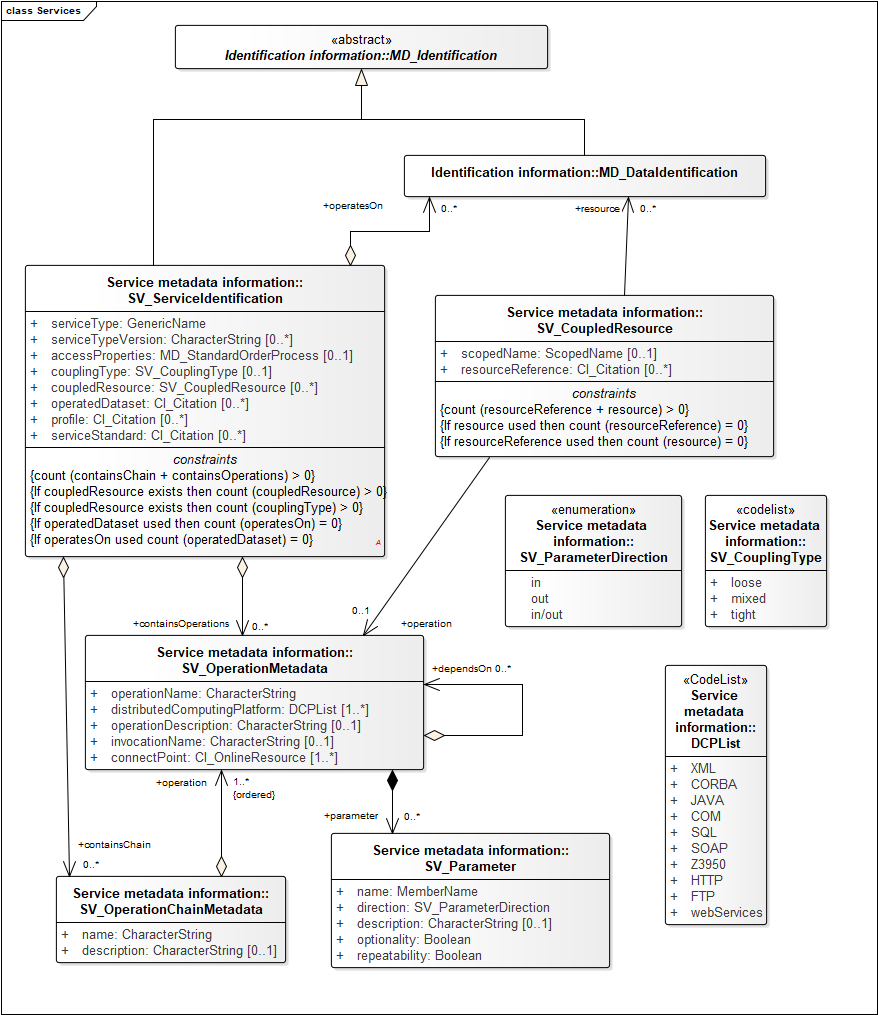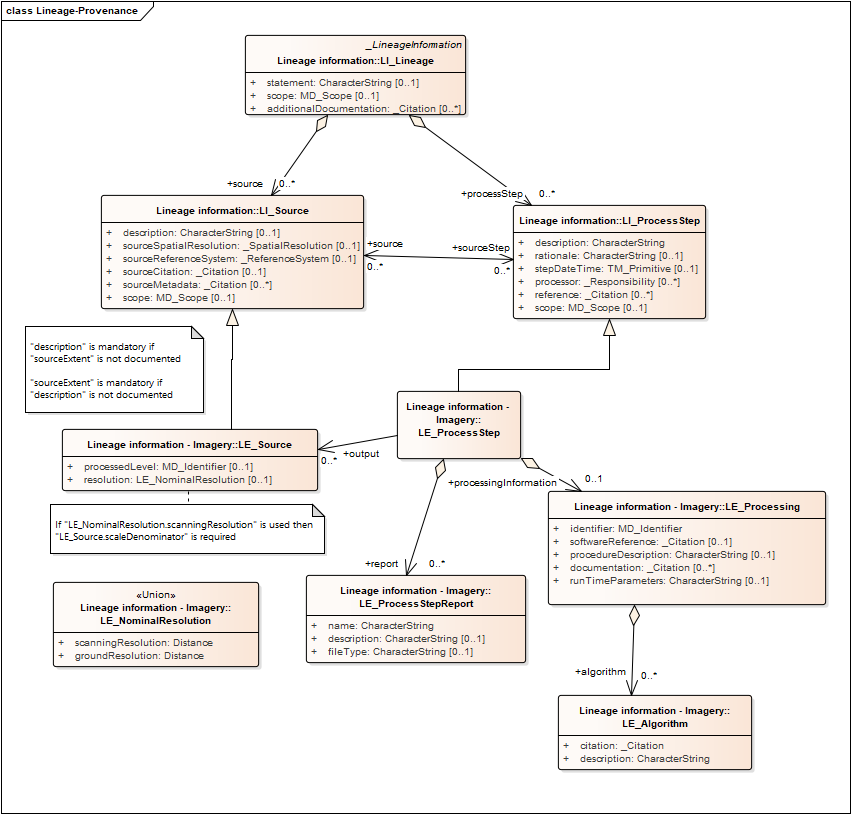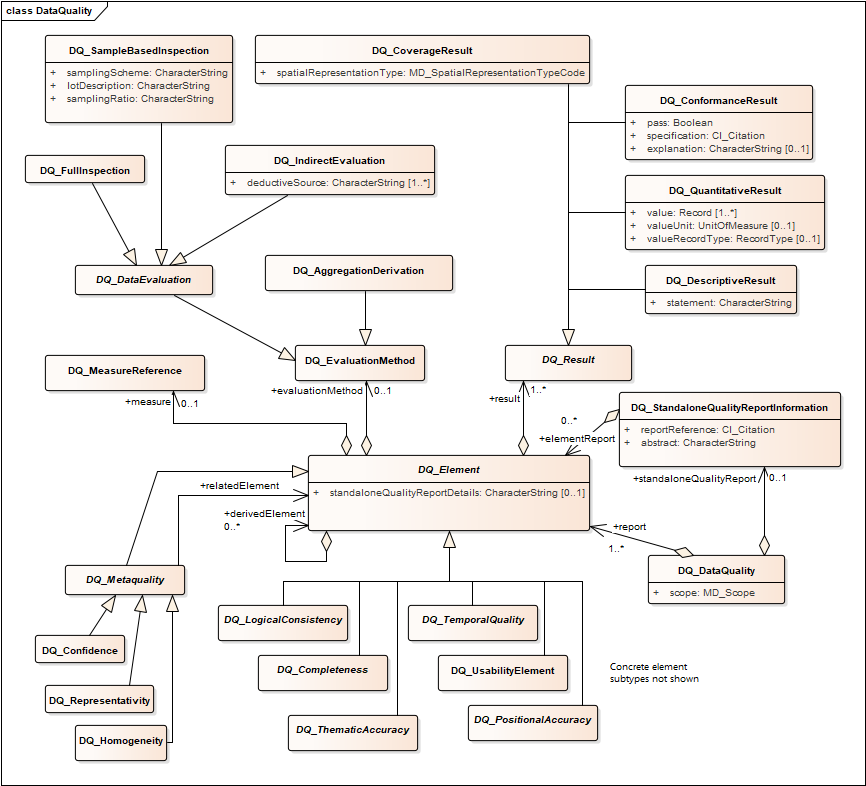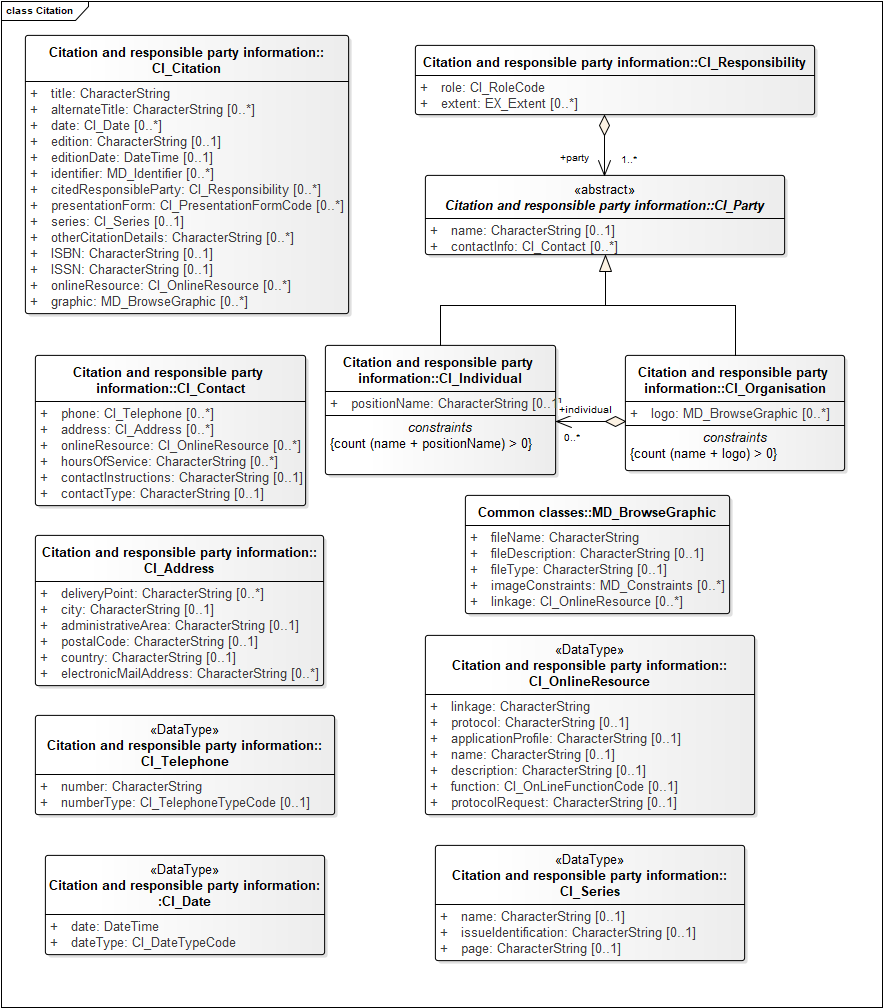...
A Guide to ISO 19115-1
Stephen M. RichardSeptember 17Richard September 18, 2018
| Table of Contents | ||||
|---|---|---|---|---|
|
...
This section discusses the main topic areas that can be included in ISO metadata documents. These topics are metadata about the metadata, basic resource documentation, constraints, content structure and function, distribution, lineage (provenance), usage, maintenance, related resources and data quality.
Metadata about the metadata
Each metadata record includes information about the origin, update date, creator, and maintenance of the record
...
Basic resource documentation
Information about the resource, including citation information (title, author etc.), identifiers, an abstract and various other free text descriptive fields, language of content, processing level, status,
...
The model allows spatial and temporal extents to be documented independently, or coupled as a spatial-temporal extent for subject regions that are in different geospatial locations at different times, or has one or more sampling extents that were sampled at different (possibly multiple) times.
Spatial extent
Properties that specify the geospatial location. There are options to specify horizontal extent via a bounding box using a standard spatial reference system (WGS84 latitude and longitude), using a place name or identifier, or with a general geographic coordinate geometry. Vertical extent can be documented separately with a minimum and maximum depth or elevation defined in a specified spatial reference system.
...
Provides elements to describe a dataset represented as a coverage—a set of attributes on one or more variable dimensions; this approach is based on documenting gridded datasets like remote sensing data acquired from a satellite. The diagram below shows the content information elements implemented in ISO19115-3, which includes ISO19115-1 and ISO19115-2 elements.
Feature catalog
A feature catalog(ue) (ISO19110) represents datasets as a collection of 'features', each of which has one or more attributes. This approach maps nicely to entity/attribute data structures typical of relational databases, or to object-oriented data structures. The UML diagram below shows the feature catalogue model from ISO19110.
Application schema
The ISO 19115-3 implementation allows a citation to one or more documents describing the application schema for the resource. The scope note for Application Schema link object (MD_ApplicationSchema) reads "the application schema used to define and expose the structure of a resource, i.e. the model and/or data dictionary that represents the resource.", which can be interpreted as a document that describes a data structure or the operation of an application. In practice this element is rarely used in my experience. The application schema element is a property of the base MD_Metadata element; multiple values are allowed, but the model does not include a binding between and application scheme and a particular distribution.
...
The service metadata (SV_ServiceIdentification) section is also used in some profiles to document service interfaces implemented to access one or more datasets. There is opportunity for ambiguity and confusion here as to whether the metadata record is about a service as a set of operations accessible via some invocation process, or whether the metadata record is about a dataset and the service provides one means of accessing the dataset (which seems to be the more common situation). The USGIN and INSPIRE metadata profiles recommend using MD_DistributionInformation for service distributions of a specific dataset in metadata records that are about that dataset.
Resource Distribution
Distribution section provides information on how to access a digital representation of the resource described by the metadata record. The ISO19115 model is structured to allow multiple distributions, with multiple distributors, formats, and transfer options associated with each distribution. Transfer options and formats can be bound to a particular distributor or not. The model is quite flexible, but this leads to multiple approaches to documenting distributions, see Resource Access links in the Challenges section, below.
Distributor
Identifies a party responsible for maintaining a distribution process via a CI_ResponsibleParty component (see Responsible party in the Components section, below), and information about any ordering process associated with the distributor, including fees, available date, instructions, expected processing turnaround time, and an extension point for specifying any other applicable options
...
Resource provenance is recorded by a collection of processing steps, each of which can have one or more associated sources (inputs), responsible parties, citations for related resources, a time stamp, a scope (resource part, space or time), and a description and rationale free text. Process steps can be ordered sequentially using the time stamps.
Usage
A ISO19115-2 adds additional elements; these are all implemented in ISO19115-3 XML, and are shown in the UML diagram below.
Usage
A collection of reports on usage of the resource can be included in a metadata record. These usage reports can include a time stamp, a responsible party for the usage report, various text fields documenting the usage, and links to citations with related information. The Usage element is shown in the UML diagram in the Basic Resource Documentation section, above.
Maintenance
A collection of reports about maintenance of the metadata record or the described resource can be included, each with documentation about the frequency of updates, data of last maintenance, scope of maintenance, responsible party for maintenance, and a text description of the maintenance activity. The Maintenance element is shown in the UML diagram in the Basic Resource Documentation section, above.
Related resources
Related resources are linked via a citation to a metadata record for the linked resource, or a citation to the linked resource itself. Each related resource instance has an association type from a controlled vocabulary with values like crossReference, source, largerWorkCitation, dependency, isComposedOf. An optional initiative type can be specified, with values from a controlled vocabulary that includes terms like campaign, collection, exercise, mission, sensor, platform, program, study, trial. Based on the values in this vocabulary, the initiative type can be used to categorize the kind of linked resource. The AssociatedResource element is shown in the UML diagram in the Basic Resource Documentation section, above. Note that in ISO19115(2006) this element is named MD_AggregateInformation.
Data Quality
Data Quality characterization was included in the 19115(2006) model, but in the 19115-1 model, the data quality section has been moved to a separate ISO specification ISO19157. The model for documenting data quality is very similar in both cases, with only minor modifications and additions in ISO19157. The data quality documentation consists of a set of reports. The reports are hard typed, with 16 types defined, as well as a stand alone quality report option that is a citation to an external document. The report types are grouped in the following way: Usability, logical consistency, temporal quality, thematic accuracy, and completeness. Each report includes one or more result values that can be a simple 'pass/no pass', a quantitative value, a coverage (ISO19157 amendment 1), or descriptive text; result values can have a time stamp and a scope. Optional properties include specification of the evaluation method, an identifier and name for the measurement made, and elements to characterize the confidence, representativity, and homogeneity of the reported quality.
Components:
There are several data objects that are used as the value type for elements in multiple parts of the model, and in some cases could also be used in multiple metadata records. Instances of these could be stored in a registry and referenced from multiple metadata records to improve efficiency and simplify maintenance of commonly used information.
...
CI_Party represents individuals (name or role) or organizations, and affiliations between individuals and organizations. A party is bound to a role in various 'responsibilities' relative to a described resource. This allows the same person or organization be play multiple roles like author, maintainer, publisher, owner, distributor, editor etc. (CI_RoleCode vocabulary). Contact information including telephone number, postal address, and e-mail address are linked to parties. ISO19115-1 Amendment 1 adds an identifier property for each party so that URI's can be associated with people and organizations. It also adds an extent (spatial or temporal) property on a responsibility assignment that can be used, for instance, to document areas that were mapped by different people in a geologic map dataset.
Responsible party is used in various contexts; various roles might be assigned to the party in any given context.
...
Citations in the second role might be used in multiple metadata records. The CI_Citation element is shown in the UML diagram with Responsible Party, above.
Extent
Named extent objects might be used in multiple metadata records. Extent objects can include one or more geographic, vertical or temporal elements. Geographic elements can be a bounding box specified by two corner point coordinates, a generic GML geometry, or an identifier object. Vertical elements have a lower an upper bounding value, and an optional specified reference system. Temporal elements can be specified by a time ordinal era (e.g. Jurassic, or Reign of Henry VIII), a calendar date and time, or a time interval specified by a begin and end calendar date time. Specific geographic elements can be bound to specific temporal elements.
...

